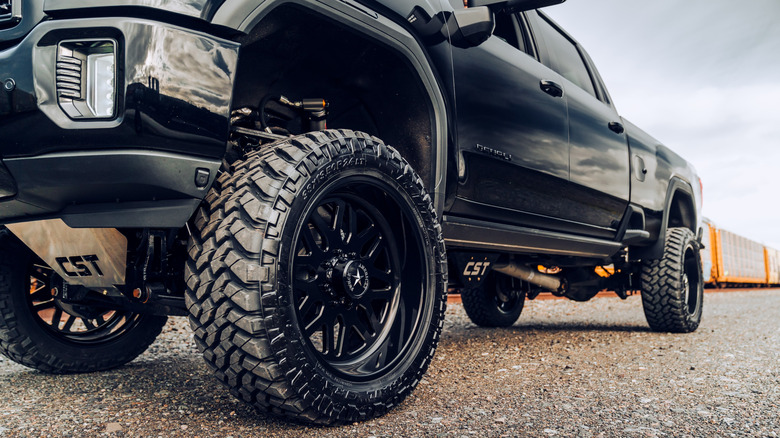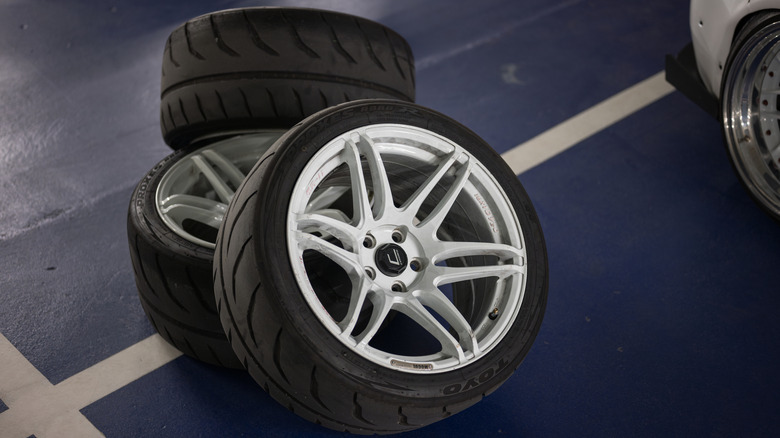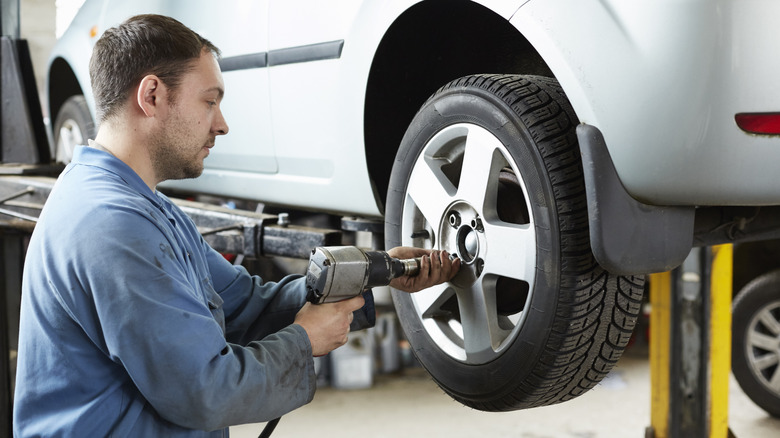Do Bigger Tires Affect MPG? (And Should You Switch To Smaller One Instead?)
Today's cars are a product of years of design, testing, and development. Each component — including the nuts, bolts, belts, and tires intended for the car — undergo continuous evaluation and refinement before they finally get installed in the actual production version. This is meant to ensure that the car that comes out of the factory is at its peak condition, and no modifications are needed.
This, however, does not dissuade owners from modifying their cars with the intention of either a visual or performance upgrade. One of the easiest mods to do is changing the stock rims and tires for a better design or a bigger size. Aesthetically, installing bigger rims and low-profile tires can significantly alter a car's appearance, by lowering or raising its ride height, or altering its stance. Performance-wise, benchmark tests show that installing larger and wider tires significantly improves grip for cornering, acceleration, or braking. At the same time, though, bigger tires can negatively affect the fuel consumption rate.
As indicated by several studies, including one from Consumer Reports, there is a trade-off to using bigger tires. Before deciding if stock tires or even a smaller size is better, it would be best to review all options before changing or upgrading to a bigger tire size to determine if the benefits outweigh any downside or risk.
Bigger isn't always better
The MPG rating of a car is computed by the manufacturer using its stock configuration as the basis. Installing bigger tires decreases fuel efficiency because of several reasons. One important factor is weight, which affects MPG because even stock rubber tires are heavy, and a bigger tire size would have a corresponding increase in weight. This then makes the engine work harder, and as a result, burns more fuel to move the car because of the additional mass. In some cases, installing a bigger tire also requires changing the rim size, which adds even more weight.
Rotational Inertia is the force that is required to make an object rotate, and in a car, the engine delivers this force to the wheels through its axles. Because of its size, the distribution of mass in a big tire is much farther out from the center where the axles are connected. This results in a higher rotational inertia that requires more power from the engine to make the wheels spin, either from a standstill or during acceleration.
Rolling resistance also has a substantial impact on fuel consumption because of the wider profile that bigger tires would have. This then results in more of the rubber being in contact with the ground. This larger contact patch then adds to the friction that the car needs to overcome in order to move. The aerodynamics of the tires are another factor that causes increased fuel consumption in the long run. Increasing tire size adds to the width of the tires, affecting fuel consumption because of the added wind resistance that the car will encounter compared to the more streamlined profile of a smaller tire.
Stock tires are where its at for best fuel economy
From a financial perspective, using bigger tires means not just increased fuel costs, but an overall increase in tire expenses as well. Bigger tires are more expensive than regular tires, and wear out more easily, thus requiring more replacements throughout the lifespan of the car. Bigger tires also impact other components of the car, as the measurements and tolerances for the brakes, wheel bearings, axles, and suspension were designed for the stock tires. This additional mechanical stress can cause premature wear and tear.
For tire sizes, going the opposite route is also detrimental, because installing a smaller-sized tire will also harm the miles-per-gallon rating and bring additional issues, including safety risks because of diminished handling, compromised stability, and reduced braking capabilities. Cost-wise, while smaller tires are cheaper, their smaller size means they accumulate more rotations per mile traveled, making them wear out faster.
To maximize fuel efficiency, maintain its good condition, and bring out the best performance of a car, the stock tire and wheel size will always be the ideal configuration. That said, each car owner has individual wants, needs, and preferences for their ride, so the best route to take on what tire size to use should be about striking a balance between looks, safety, and performance.


